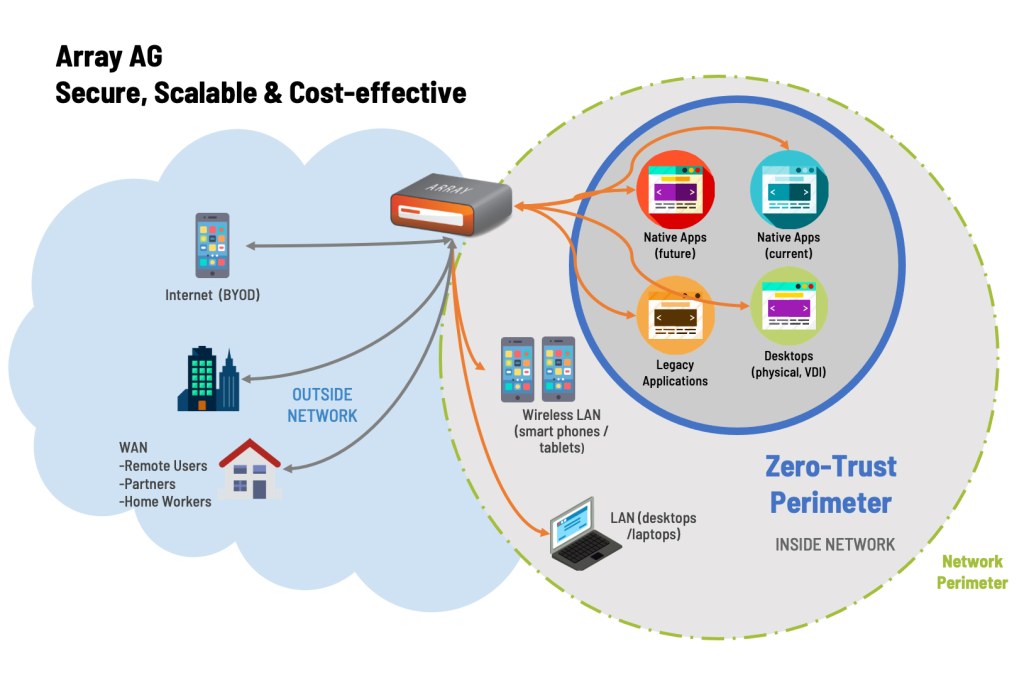Unlock The Power Of The Latest Network Technology Trends: Stay Ahead With Our Eye-Catching CTA
Latest Network Technology Trends
Greetings, Friends! In this article, we will delve into the latest network technology trends that are shaping the digital landscape. As technology continues to evolve at a rapid pace, staying abreast of these trends is crucial for businesses and individuals alike. From the advent of 5G to the rise of edge computing, we will explore the exciting developments that are revolutionizing how we connect and communicate in the modern world.
Introduction
The world of network technology is constantly evolving, and it is essential to stay updated with the latest trends. In this section, we will provide an overview of the key network technology trends that are currently making waves.
2 Picture Gallery: Unlock The Power Of The Latest Network Technology Trends: Stay Ahead With Our Eye-Catching CTA


1. 5G Networks 📱
5G networks are the next generation of mobile internet connectivity. With faster speeds, lower latency, and increased capacity, 5G networks will unlock a myriad of opportunities for businesses and consumers alike.

Image Source: trendforce.com
2. Internet of Things (IoT) 🔄
The Internet of Things (IoT) refers to the network of interconnected devices that can communicate with each other. From smart homes to connected cars, IoT has the potential to transform various industries and enable more efficient and convenient living.
3. Artificial Intelligence (AI) in Networking 🙈

Image Source: real-sec.com
AI-powered networking solutions are becoming increasingly prevalent. By leveraging machine learning and automation, AI can optimize network performance, detect and mitigate security threats, and streamline network management processes.
4. Edge Computing 🎮
Edge computing involves processing data closer to the source rather than relying solely on centralized cloud servers. This trend is gaining traction due to its ability to reduce latency, enhance real-time data processing, and enable applications that require immediate response times.
5. Software-Defined Networking (SDN) 💻
SDN separates the control plane from the data plane, allowing for more flexible and efficient network management. By decoupling network control, SDN enables centralized control and programmability, making it easier to adapt to changing network requirements.
6. Virtual Private Networks (VPNs) 🔑
VPNs provide secure and private connections over public networks. With the increase in remote work and the need for secure data transfer, VPNs have become essential for individuals and businesses to protect their sensitive information.
What are the Latest Network Technology Trends?
1. What is 5G and how does it differ from previous generations of mobile networks? 📱
5G is the fifth generation of mobile network technology, offering significantly faster speeds, lower latency, and increased capacity compared to its predecessors. Unlike 4G, which primarily focused on providing faster internet access, 5G aims to revolutionize entire industries with its ultra-reliable low-latency communication capabilities. This enables a wide range of applications, including autonomous vehicles, remote surgery, and smart cities.
2. Who can benefit from the Internet of Things (IoT)? 🔄
The Internet of Things has the potential to benefit various industries and individuals. In the healthcare sector, IoT devices can enable remote patient monitoring and personalized treatments. In the manufacturing industry, IoT can optimize supply chain management and predictive maintenance. Additionally, IoT devices can enhance our daily lives by automating household tasks and creating smart homes.
3. When will 5G networks be widely available? 📱
5G networks are already being rolled out in many countries, but widespread availability may take a few more years. Network infrastructure needs to be upgraded to support the new technology, and regulatory frameworks must be established to ensure smooth implementation. However, major cities and urban areas are expected to have comprehensive 5G coverage sooner, with broader availability in subsequent years.
4. Where is edge computing being utilized? 🎮
Edge computing is being utilized in various industries and applications. In the healthcare sector, it enables real-time analysis of patient data and facilitates remote telemedicine services. In the transportation industry, edge computing supports autonomous vehicles by enabling faster decision-making and reducing latency. Furthermore, edge computing can enhance the performance of augmented and virtual reality applications, online gaming, and video streaming.
5. Why is software-defined networking (SDN) gaining popularity? 💻
SDN is gaining popularity due to its ability to improve network flexibility, scalability, and agility. Traditional networks are often complex and challenging to manage, requiring manual configuration for each individual network device. SDN simplifies network management by centralizing control and allowing administrators to programmatically configure and manage networks. This results in cost savings, faster deployment of new services, and increased network efficiency.
6. How can virtual private networks (VPNs) benefit individuals and businesses? 🔑
VPNs provide several benefits for individuals and businesses, including enhanced security and privacy. By encrypting internet traffic, VPNs protect sensitive information from potential hackers and cyber threats. Additionally, VPNs allow users to bypass geographical restrictions and access content that may be regionally blocked. Moreover, businesses can utilize VPNs to securely connect remote employees to corporate networks, ensuring the confidentiality of company data.
Advantages and Disadvantages of Latest Network Technology Trends
1. Advantages of 5G Networks 📱
– Faster data speeds enable quicker downloads and improved streaming quality.
– Lower latency allows for near-real-time communication and faster response times.
– Increased network capacity supports a higher number of connected devices simultaneously.
– Enables the development of innovative technologies such as autonomous vehicles and smart cities.
– Enhances mobile gaming and virtual reality experiences.
2. Disadvantages of 5G Networks 📱
– Requires extensive infrastructure upgrades to support the new technology.
– Limited coverage initially, with rural areas likely to have slower implementation.
– Potential concerns regarding health effects due to increased exposure to electromagnetic radiation.
– Higher costs associated with 5G infrastructure deployment and device compatibility.
– Requires compatible devices to fully utilize 5G capabilities.
3. Advantages of IoT 🔄
– Enables remote monitoring and management of devices, leading to increased efficiency.
– Improves decision-making through real-time data analytics.
– Enhances customer experiences through personalized and context-aware services.
– Optimizes supply chain management and inventory control.
– Reduces operating costs through predictive maintenance and energy management.
4. Disadvantages of IoT 🔄
– Security and privacy concerns due to the increased number of connected devices.
– Interoperability challenges between different devices and platforms.
– Requires significant investments in infrastructure and data storage.
– Reliance on stable and reliable internet connectivity for seamless operation.
– Possibility of data breaches and unauthorized access to sensitive information.
5. Advantages of SDN 💻
– Simplifies network management and reduces operational costs.
– Enables centralized control and programmability of networks.
– Improves network scalability and flexibility to adapt to changing requirements.
– Facilitates easier implementation of network virtualization and cloud computing.
– Enhances network security by enabling dynamic and granular control over traffic flows.
6. Disadvantages of SDN 💻
– Initial setup costs may be higher due to the need for specialized hardware.
– Requires a skilled workforce with knowledge of software-defined networking.
– Reliance on compatible networking devices and protocols.
– Potential security risks if the centralized control plane is compromised.
– Integration challenges with legacy networking systems and infrastructure.
Frequently Asked Questions (FAQ)
1. What is the difference between 4G and 5G networks?
4G networks primarily focus on providing faster internet access, while 5G networks aim to revolutionize entire industries with ultra-reliable low-latency communication capabilities.
2. Are there any health concerns associated with 5G networks?
While extensive research has been conducted on the safety of 5G networks, some concerns regarding increased exposure to electromagnetic radiation remain. However, regulatory bodies set strict limits on radiation levels to ensure public safety.
3. Can edge computing completely replace cloud computing?
No, edge computing complements cloud computing by bringing processing closer to the source, reducing latency and enabling real-time applications. However, cloud computing remains essential for large-scale data storage and complex computational tasks.
4. How can businesses benefit from implementing IoT?
Businesses can benefit from IoT by improving operational efficiency, reducing costs through predictive maintenance, enhancing customer experiences with personalized services, and optimizing supply chain management.
5. Are VPNs legal and safe to use?
VPNs are legal in most countries, but their usage may be subject to certain restrictions. In terms of safety, reputable VPN providers offer robust encryption and security measures to protect user data.
Conclusion
In conclusion, the latest network technology trends are propelling us into an era of unprecedented connectivity and innovation. From the lightning-fast speeds of 5G networks to the transformative potential of IoT and AI, these trends are reshaping industries and revolutionizing the way we live and work. As businesses and individuals, it is crucial to adapt to these trends and harness their advantages to stay ahead in an increasingly interconnected world.
We hope this article has provided valuable insights into the latest network technology trends and their implications. By staying informed and embracing these advancements, we can leverage the power of technology to drive positive change and unlock new opportunities.
Final Remarks
Technology is evolving at an exponential pace, and network technology is at the forefront of this transformation. However, it is important to note that while the latest network technology trends offer immense potential, they also come with challenges that need to be addressed. It is crucial to strike a balance between embracing innovation and ensuring security, privacy, and ethical considerations.
As we embark on this exciting journey of technological advancement, let us remember to approach it with responsibility and mindfulness. By harnessing the power of the latest network technology trends thoughtfully, we can create a future that is both technologically advanced and sustainable.
This post topic: Latest Technology Trends

